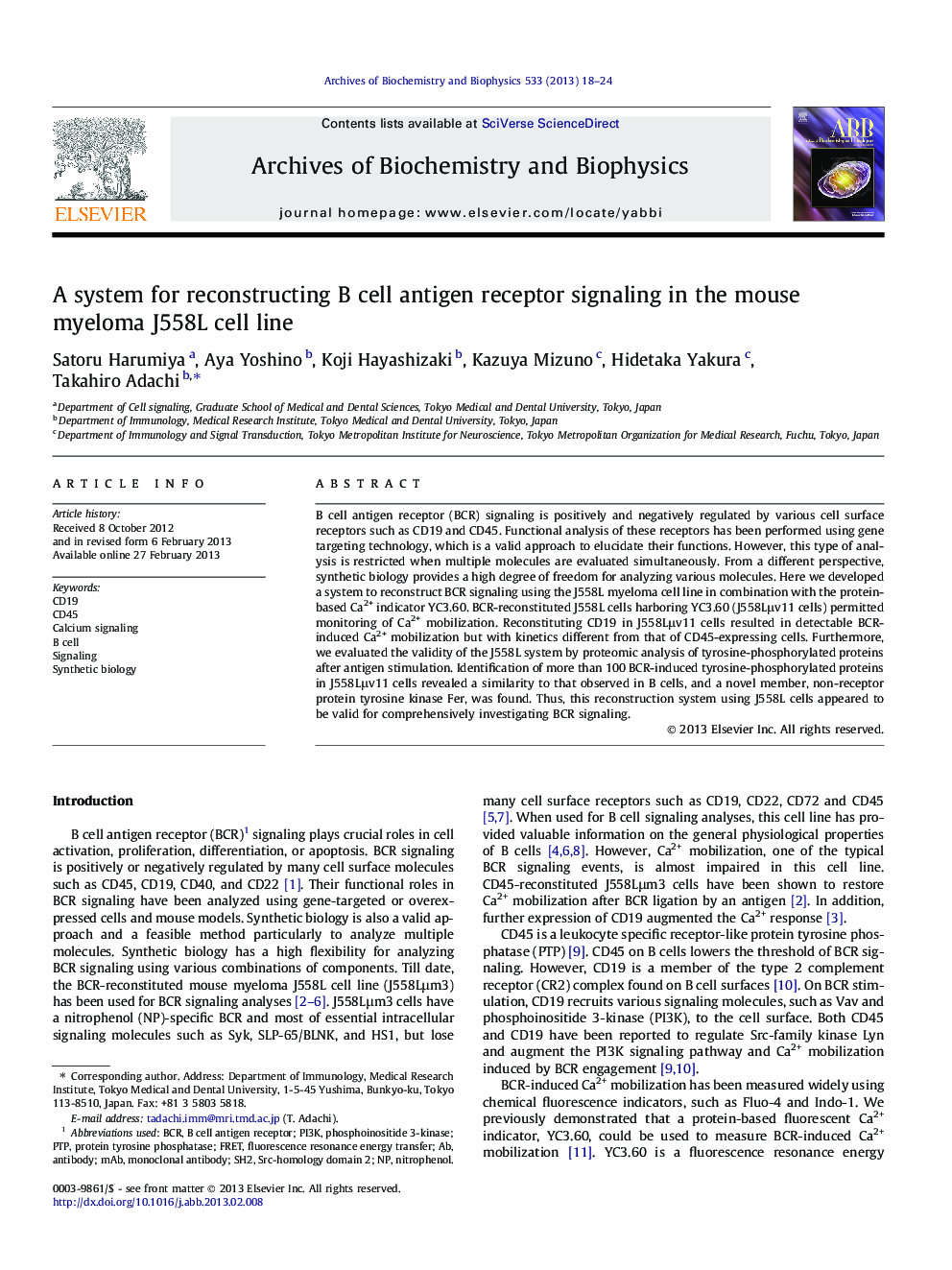| Article ID | Journal | Published Year | Pages | File Type |
|---|---|---|---|---|
| 1925354 | Archives of Biochemistry and Biophysics | 2013 | 7 Pages |
B cell antigen receptor (BCR) signaling is positively and negatively regulated by various cell surface receptors such as CD19 and CD45. Functional analysis of these receptors has been performed using gene targeting technology, which is a valid approach to elucidate their functions. However, this type of analysis is restricted when multiple molecules are evaluated simultaneously. From a different perspective, synthetic biology provides a high degree of freedom for analyzing various molecules. Here we developed a system to reconstruct BCR signaling using the J558L myeloma cell line in combination with the protein-based Ca2+ indicator YC3.60. BCR-reconstituted J558L cells harboring YC3.60 (J558Lμv11 cells) permitted monitoring of Ca2+ mobilization. Reconstituting CD19 in J558Lμv11 cells resulted in detectable BCR-induced Ca2+ mobilization but with kinetics different from that of CD45-expressing cells. Furthermore, we evaluated the validity of the J558L system by proteomic analysis of tyrosine-phosphorylated proteins after antigen stimulation. Identification of more than 100 BCR-induced tyrosine-phosphorylated proteins in J558Lμv11 cells revealed a similarity to that observed in B cells, and a novel member, non-receptor protein tyrosine kinase Fer, was found. Thus, this reconstruction system using J558L cells appeared to be valid for comprehensively investigating BCR signaling.
► We developed a system to reconstitute BCR signaling in non-B cell line J558L. ► YC3.60 permits monitoring of BCR-mediated Ca2+ signaling. ► CD45 and CD19 differentially regulated Lyn and Akt activation and Ca2+ mobilization. ► We identified more than 100 tyrosine-phosphorylated proteins in BCR-reconstituted J558L cells. ► Fer is involved in BCR signaling.
